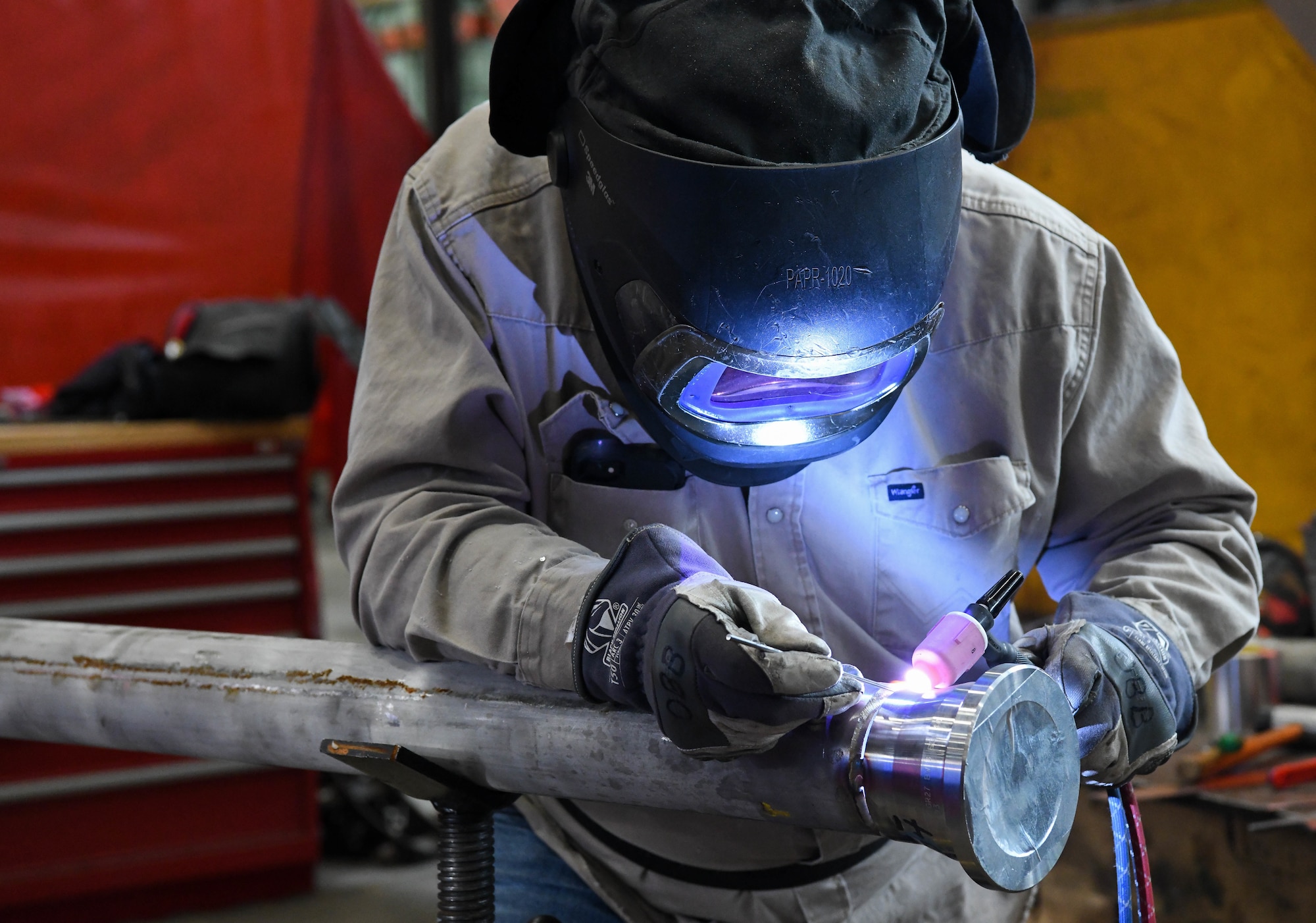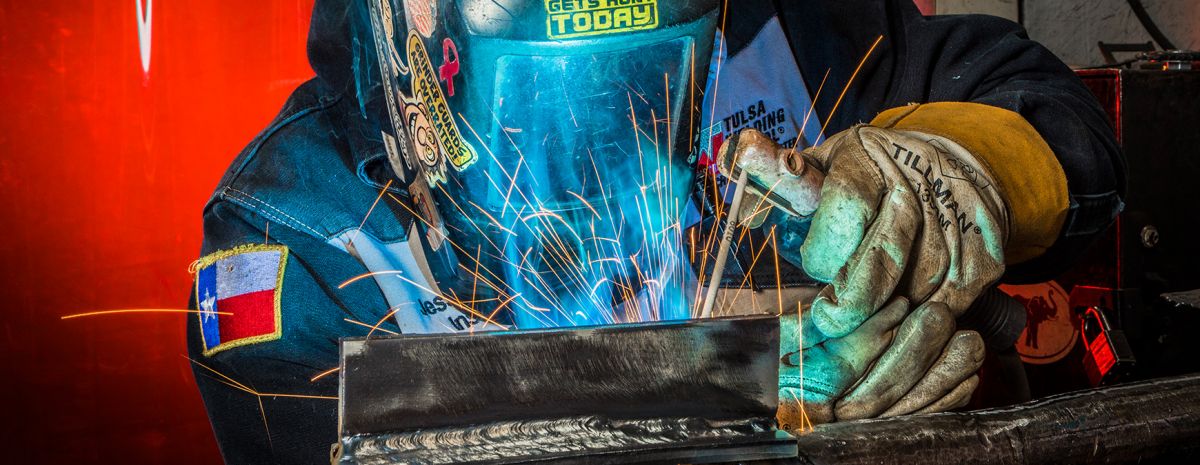A guide to perfect fusion with Montana Mobile Welding and Repair Belgrade Fabrication
Wiki Article
Typical Welding Fixing Issues and Just How to Address Them Efficiently
Welding repair work commonly come across a variety of problems that can jeopardize the honesty of the end product. Typical problems consist of insufficient infiltration, porosity, and imbalance, amongst others. Each defect offers one-of-a-kind obstacles that require certain approaches for resolution. Comprehending these problems is necessary for welders intending to enhance their end results and skills. This discussion will check out these typical welding repair service concerns and efficient approaches to resolve them.Poor Penetration
Poor infiltration happens when the weld metal fails to totally fuse with the base product, resulting in weak joints and possible structural failures. This concern commonly stems from inadequate warm input, incorrect electrode angle, or improper welding rate. Welders may encounter insufficient penetration due to a mistake of the required criteria for a specific product density or kind. In addition, contamination on the base product's surface area can hinder reliable bonding, exacerbating the issue. To address poor infiltration, welders need to guarantee suitable setups on their tools and keep a clean job surface. Regular examination of welds is advised to recognize any kind of shortages early, permitting for prompt modifications and the avoidance of compromised architectural honesty in welded settings up.Porosity
Porosity is a common defect in welded joints that materializes as tiny gas bubbles trapped within the weld metal. This defect can jeopardize the stability of the weld, bring about lowered stamina and prospective failure under anxiety. Montana Mobile Welding and Repair Belgrade. Porosity usually emerges from contamination, dampness, or incorrect welding techniques, which enable gases to leave right into the liquified weld swimming pool. To address porosity, welders must guarantee appropriate surface preparation, maintain a tidy workplace, and use ideal welding criteria. Additionally, picking the appropriate filler product and securing gas can alleviate gas entrapment. Regular evaluation and screening of welds can help recognize porosity early, ensuring prompt restorative actions are taken, thereby maintaining the high quality and reliability of the bonded structureImbalance
Misalignment in welding can emerge from numerous variables, including improper configuration and thermal development. Understanding the root triggers is vital for efficient resolution. A number of correction strategies are readily available to straighten components and assure structural integrity.Reasons for Misalignment
Welding imbalance usually comes from a variety of underlying issues that can jeopardize architectural stability. One key reason is inappropriate fit-up of components prior to welding, which can bring about voids and irregular surface areas. Variations in thermal development throughout the welding procedure can also lead to distortion, specifically if the products being signed up with have various coefficients of expansion. Furthermore, inadequate fixturing and clamping might fail to hold parts firmly in position, leading to motion throughout welding. Inadequately kept devices, including welding devices and devices, may introduce disparities in the weld grain, additional contributing to imbalance. Lastly, driver mistake, stemming from insufficient training or experience, can additionally play a substantial role in developing misaligned welds.Adjustment Methods Offered
Attending to misalignment effectively calls for a combination of rehabilitative techniques tailored to the specific concerns at hand. One usual technique is the use of jigs or fixtures to hold parts in the appropriate placement throughout welding, making sure regular positioning. Additionally, pre-heating the materials can help lower distortion and improve fit-up. For considerable imbalance, mechanical adjustment strategies, such as utilizing hydraulic jacks or clamps, can be employed to deal with the setting before welding. Post-weld warmth treatment may likewise be required to alleviate stress and anxieties brought on by misalignment. Cautious examination and change throughout the configuration stage can prevent imbalance concerns from coming to be substantial problems, advertising a smoother welding process and improving total architectural stability.Distortion
Distortion is a common difficulty in welding that can develop from numerous variables, consisting of uneven cooling and heating. Understanding the root causes of distortion is crucial for carrying out reliable avoidance methods. Addressing this issue not just boosts architectural stability however likewise improves the total quality of the weld.Sources of Distortion
When subjected to the intense heat of welding, materials typically undertake adjustments that can result in distortion. This sensation largely emerges from thermal growth and tightening throughout the welding process. As the weld area warms up, the material increases; upon air conditioning, it gets, which can develop interior tensions. Furthermore, irregular heating across a workpiece can aggravate these tensions, resulting in bending or bending. The type of product additionally plays a substantial duty; metals with differing thermal conductivity and coefficients of expansion may react differently, resulting in unpredictable distortions. Poor joint design and insufficient fixturing can add to misalignment during welding, enhancing the likelihood of distortion. Recognizing these causes is essential for efficient welding repair service and prevention approaches.Prevention Techniques
Reliable avoidance strategies for distortion during welding concentrate on controlling warm input and making certain appropriate joint style. Preserving a regular warmth input assists to decrease thermal expansion and contraction, which can cause distortion. Utilizing methods such as preheating the workpiece can also decrease the temperature slope, promoting uniform home heating. Additionally, selecting proper joint layouts, such as T-joints or lap joints, can enhance security and lower stress and anxiety concentrations. Executing appropriate fixturing to protect the workpieces in position better aids in preserving alignment throughout the welding procedure. Staggered welding series can distribute heat a lot more uniformly, stopping local distortion. By using these approaches, welders can substantially reduce the likelihood of distortion and improve the total quality of their welds.Cracking
Splitting is a typical concern encountered in welding repair work, typically resulting from different elements such as incorrect air conditioning rates, product choice, or poor joint preparation. The occurrence of cracks can considerably endanger the stability of the weld, bring about potential failures throughout operation. To resolve this concern, welders have to first assess the root creates, guaranteeing that products are compatible and appropriately chosen for the certain application. Additionally, regulating the air conditioning rate during the welding procedure is crucial; fast cooling can generate stress and anxiety and lead to splitting. Correct joint design and preparation likewise add to lessening the threat. Executing these strategies can improve weld high quality and resilience, inevitably lowering the probability of cracking in completed weldments.
Insufficient Combination
A significant issue in welding repair work is incomplete fusion, which happens when the weld steel does not adequately bond with the base material or previous weld passes - Fabrication. This issue can cause weak points in the joint, potentially compromising the integrity of the welded framework. Elements adding to incomplete combination consist of not enough warm input, improper welding method, and contamination of the surfaces being joined. To resolve this concern effectively, welders should guarantee correct pre-weld cleaning and surface area prep work, along with change their welding specifications to attain adequate penetration and combination. Regular assessment during the welding procedure can additionally aid identify incomplete fusion early, enabling timely corrective measures to improve the overall quality of the weldOverheating
While welding repair work can boost architectural integrity, overheating offers a considerable challenge that can bring about material deterioration. Excessive warmth during welding can alter the mechanical homes of steels, resulting in lowered stamina, enhanced brittleness, and bending. This phenomenon is particularly vital in high-stress applications where architectural integrity is critical. Recognizing overheating can involve aesthetic examinations for discoloration or distortion, along with keeping track of temperature throughout the welding process. To minimize the risks related to getting too hot, welders should employ suitable strategies, such as managing heat input, adjusting traveling rate, and using appropriate filler products. Additionally, applying pre- and post-weld warm treatments can assist restore material homes and boost the total top quality of the fixing, guaranteeing long-term efficiency and safety and security.Frequently Asked Concerns
What Are the Common Indications of a Welding Problem?

Just How Can I Evaluate My Welds for Quality?
To check welds for top quality, one can use visual examinations, ultrasonic screening, and radiographic methods. Each technique ensures structural honesty, identifies issues, and verifies adherence to specified requirements, eventually enhancing the reliability of the bonded joints.What Safety Precautions Should I Take While Welding?
When welding, one must focus on safety by wearing suitable personal protective tools, ensuring proper air flow, safeguarding combustible products away, maintaining a tidy work space, and understanding surroundings to avoid crashes and injuries.Can I Fix a Weld Without Redesigning the Entire Joint?
Repairing a weld without redesigning the entire joint is feasible, relying on the damage (Montana Mobile Welding and Repair Fabrication). Methods such as grinding, including filler product, or making use of a welding process can successfully deal with details flaws while maintaining the surrounding frameworkWhat Equipment Are Vital for Efficient Welding Fixes?
Important devices for reliable welding repairs consist of a welding equipment, cable brush, grinder, safety gear, clamps, and filler products. Each tool plays a crucial duty in guaranteeing quality and security during the fixing procedure. Porosity commonly develops from contamination, dampness, or incorrect welding Montana Mobile Welding and Repair Belgrade Fabrication strategies, which enable gases to run away into the molten weld pool. Improperly kept devices, including welding devices and tools, might present incongruities in the weld bead, additional contributing to misalignment. When subjected to the intense warm of welding, products commonly undergo changes that can lead to distortion. Breaking is an usual problem encountered in welding repair services, frequently resulting from different aspects such as inappropriate cooling prices, product option, or poor joint prep work. A substantial problem in welding repair services is incomplete blend, which takes place when the weld metal does not properly bond with the base material or previous weld passes.Report this wiki page